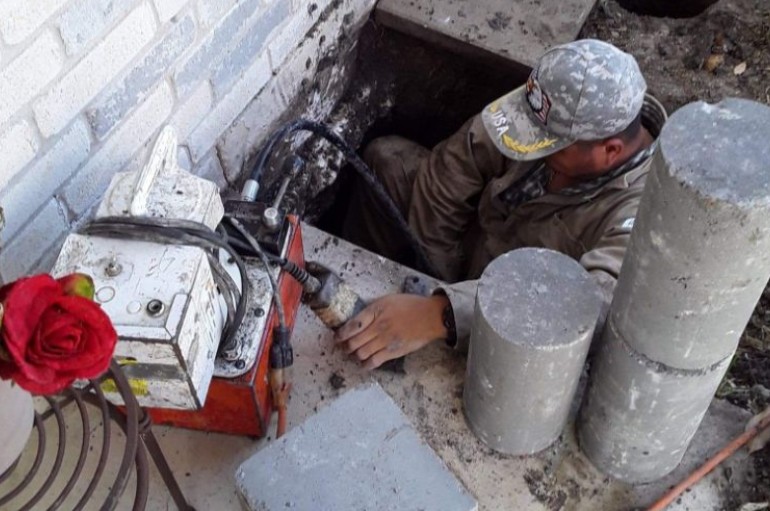Editor’s Note: A version of this story first appeared in The Good, the Bad, and the Elegy, a newsletter from the Daily Yonder focused on the best, and worst, in rural media, entertainment, and culture. Every other Thursday, it features reviews, retrospectives, recommendations, and more. You can join the mailing list at the bottom of this article to receive future editions in your inbox.
Netflix’s smash hit “Stranger Things” owes a large debt to its many influences — specifically the works of Steven Spielberg and Stephen King and the worlds of Dungeons & Dragons for a start, but also a good chunk of the whole entertainment milieu of the 1980s, if we’re being honest. All the same, it would be hasty to dismiss “Stranger Things,” now in its fourth season, as nothing more than a derivative exercise in nostalgia bait.
At a basic level, it remains novel as one of the few modern mega franchises not based on an existing brand; it stands out as an original creation, unburdened by any ties to classic films, comic books, fantasy novels, or other proven corporate IP. What’s more, in its most recent outing, the show displays a growing maturity and self-assuredness.
There are still plenty of references and homages to be found, as always — each one offering a quick dose of satisfaction for nerds and media junkies of a certain age — but these things primarily add texture and cease to feel like a crutch. The core of “Stranger Things 4’s” nostalgia goes deeper than these surface-level pleasures. The pop culture time capsule the series has constructed is at its best not when remixing and remastering old movies, songs, and merchandise, but instead when it’s shining a light on foundational, timeless themes and experiences.
A big part of how it does that is derived from the story’s small-town backdrop.
At Home in Hawkins
Save for perhaps one strange young girl with a mysterious past and telekinetic powers, few of the characters in Stranger Things have left as much of a mark on the cultural imagination as the show’s setting, a small Indiana town intertwined with a dark and dangerous dimension called the “Upside Down.”
As season four got underway, it was unclear how prominent Hawkins would remain in this story. Nearly half of the principal cast had been shuttled away at the end of the preceding season and you got the sense the show might have ambitions to go bigger, expanding its horizons beyond the humble home of seasons one, two, and three.
There is some broadening of the scope here, to be sure, with various plots stretching the action as far as California, Nevada, Alaska, and Soviet Russia. But for the most part, the show’s heart remains in Hawkins. The core conflict, and the overriding threat, are still situated there, and it gives “Stranger Things 4” space to explore the town’s history and geography more deeply.
Whereas seasons one and two felt relatively intimate, focused on the homes and neighborhoods of a few core characters, and season three spent a whole lot of its running time at a glossy new shopping mall, season four offers a more satisfying tour of Hawkins and its landscape.
We get to know the high school better, with our principal cast having aged up considerably since season three. We see diverse neighborhoods, the familiar Wheeler home offering a marked contrast to the more rugged mobile home park where newer characters like Max and Eddie live. We visit lakes and hiking trails, as well as some more remote cabins and a prototypical haunted mansion, abandoned on the edge of town.
The show’s expanded budget is apparent in all of this. With many more characters and a larger story to tell, “Stranger Things 4” shows off a Hawkins that feels more like a real, lived-in place. It also helps that the production design here continues to be a marvel. Whether it’s wood-paneled walls and vintage home décor or a period-accurate Family Video movie rental store, it’s impressive how well the production captures the look of an earlier era, down to all the little details.
This isn’t just set decoration for decoration’s sake though. It facilitates our investment in the place and underscores the stakes for these characters. Hawkins is presented as a place with a lot of trauma, understandably so, given three seasons’ worth of conflict with the monsters spawned from its dark and dangerous underbelly. But it’s also consistently framed as a place worthy of protecting and holding onto, its characters never hesitating to spring into action to save it.
When the plot of “Stranger Things 4” really reveals itself and kicks into overdrive about halfway through, this sentiment rings out loud and clear. “Hawkins is in danger,” we’re told at the start of a dramatic monologue outlining what’s on the line. Numerous central characters are asked to make difficult choices but whenever they need to push through or persevere, it’s the relationship with their friends and their town that drives them.
By the end of that monologue, it’s evidently clear that all the various subplots and setup can only culminate in all of them coming together in Hawkins once more.
Necessary Nostalgia
From my perspective, that’s really what the nostalgia of “Stranger Things” exists to do: to celebrate these coming-of-age relationships and experiences. It’s not about Lite Brites and roller rinks. It’s not about Kate Bush songs and the pantheon of 1980s horror movies. It’s not about the synthwave soundtrack and a neon-tinged, fuzzy-VHS aesthetic. If the series was merely about these things, I reckon there’s no way it would have been anywhere near as successful as it has been.
“Stranger Things” takes the naive subtext of our youth and teenage years and makes it text. The notion that your friend group and the streets you patrol are without question the center of the known universe. The idea that your next misadventure will be the most consequential and amazing thing, however it might unfold. There’s endless possibility — and yes, plenty of drama, danger, and mystery — around every corner. The fate of the world might even be at stake.
When you only know your home, your friends, and your exploits together, those things are therefore everything.
Using the horror-adventure genre equips the show to take all that “make believe” and make it real. It takes the hopes, dreams, fears, and anxieties we carry and manifests them in magical, monstrous form. It may be larger-than-life, but it grasps that unique time and place before we’re able to put our lives in a larger context, and says, “What if you’re right? What if this is the center of the universe and you are the heroes of the story?”
That type of nostalgia in and of itself can also be noxious and cloying, an impediment to maturation and growth. But in a world choked by both mass commercialism and an increasing loss of agency — everyone jumping from one shiny new toy or sociopolitical trauma to the next — it’s valuable to be reminded of these older, time-tested notions. That where we come from matters, that it’s our relationships that sustain us, and that we don’t have to completely let go of the enthusiasm, intimacy, and imagination of our younger days.
The kids of Hawkins, a motley crew of small-town dreamers, have been a pretty great vessel for that message and I expect their adventures will leave a lasting impact as TV comfort food for multiple generations, not just those with a strong case of 1980s nostalgia.
“Stranger Things 4” Volume 1 is now streaming on Netflix. Volume 2 releases on July 1.
This article first appeared in The Good, the Bad, and the Elegy, an email newsletter from the Daily Yonder focused on the best, and worst, in rural media, entertainment, and culture. Every other Thursday, it features reviews, recommendations, retrospectives, and more. Join the mailing list today to have future editions delivered straight to your inbox.
Close window
Republish this article
1








